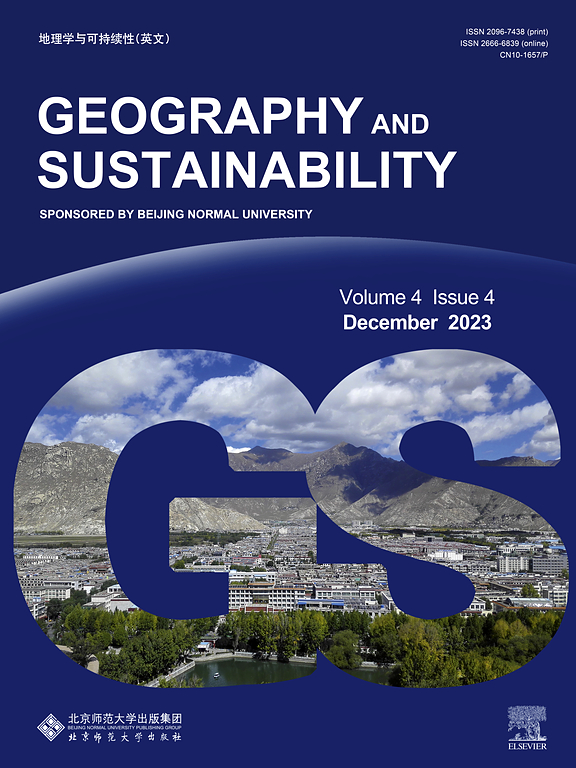Unveiling human impacts on global Key Biodiversity Areas: Assessing disturbance and fragmentation to inform conservation strategies
IF 8
1区 环境科学与生态学
Q1 GEOGRAPHY, PHYSICAL
引用次数: 0
Abstract
Effective preservation of Key Biodiversity Areas (KBAs) is crucial to address biodiversity loss. Human-induced disturbance in these vital sites can exacerbate species extinction and challenge the Kunming-Montreal Global Biodiversity Framework (GBF). This study delves into the human disturbance and protection in terrestrial KBAs worldwide, focusing particularly on habitat fragmentation to devise tailored conservation strategies. Our results reveal widespread human disturbance across global KBAs, with an average Human Footprint Index of 12.3 and a disturbance rate of 62 %. Only one-fifth of KBAs are fully safeguarded by protected areas, and a significant portion remains unprotected, with even many highly protected sites under severe disturbance. Globally, human activities have led to substantial implicit habitat fragmentation in KBAs, resulting in a 70 % average decline in habitat size, with less than half of KBAs maintaining well-connected active habitats. These findings inform the classification of KBAs for priority conservation, with 80 % requiring both intensity regulation and spatial planning of human activities. Higher levels of human disturbance do not necessarily lead to more severe fragmentation, underscoring the potential for relocating or planning human activities to mitigate fragmentation. This research serves as a foundational assessment of human impacts on KBAs, providing a basis for KBA management and global conservation efforts to meet GBF goals.

揭示人类对全球关键生物多样性地区的影响:评估干扰和碎片化,为保护策略提供信息
有效保护生物多样性重点区是解决生物多样性丧失问题的关键。这些重要地点的人为干扰可能加剧物种灭绝,并对昆明-蒙特利尔全球生物多样性框架(GBF)构成挑战。本研究探讨了全球陆地KBAs的人为干扰和保护,特别关注栖息地破碎化,以制定有针对性的保护策略。我们的研究结果表明,人类干扰在全球各地区广泛存在,平均人类足迹指数为12.3,干扰率为62%。只有五分之一的喀拉拉地区受到保护区的充分保护,很大一部分仍然不受保护,甚至许多受到高度保护的地点也受到严重干扰。在全球范围内,人类活动导致了栖息地的大量隐性破碎化,导致栖息地大小平均下降70%,只有不到一半的栖息地保持着良好的联系。这些发现为优先保护的KBAs分类提供了依据,其中80%的KBAs需要人类活动的强度调节和空间规划。较高水平的人类干扰并不一定导致更严重的碎片化,这强调了重新安置或规划人类活动以减轻碎片化的潜力。本研究为人类活动对KBA的影响提供了基础评估,为KBA的管理和全球保护工作提供了基础,以实现GBF目标。
本文章由计算机程序翻译,如有差异,请以英文原文为准。
求助全文
约1分钟内获得全文
求助全文
来源期刊

Geography and Sustainability
Social Sciences-Geography, Planning and Development
CiteScore
16.70
自引率
3.10%
发文量
32
审稿时长
41 days
期刊介绍:
Geography and Sustainability serves as a central hub for interdisciplinary research and education aimed at promoting sustainable development from an integrated geography perspective. By bridging natural and human sciences, the journal fosters broader analysis and innovative thinking on global and regional sustainability issues.
Geography and Sustainability welcomes original, high-quality research articles, review articles, short communications, technical comments, perspective articles and editorials on the following themes:
Geographical Processes: Interactions with and between water, soil, atmosphere and the biosphere and their spatio-temporal variations;
Human-Environmental Systems: Interactions between humans and the environment, resilience of socio-ecological systems and vulnerability;
Ecosystem Services and Human Wellbeing: Ecosystem structure, processes, services and their linkages with human wellbeing;
Sustainable Development: Theory, practice and critical challenges in sustainable development.
 求助内容:
求助内容: 应助结果提醒方式:
应助结果提醒方式:


